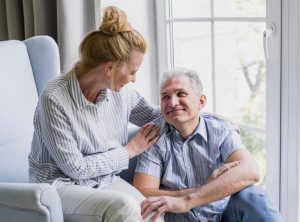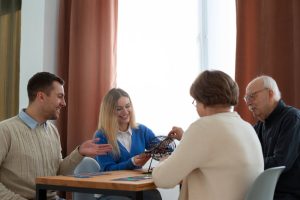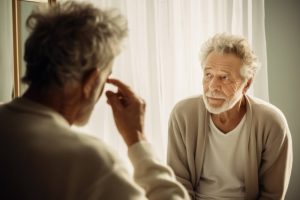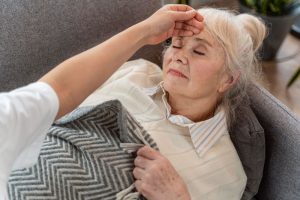As dementia progresses, individuals can experience cognitive decline, behavioral challenges, and social isolation. However, incorporating dance and music therapy into their care plan can improve overall wellbeing and enhance communication.
In this blog, we are going to explore how dance and music can positively impact mental health, physical abilities, emotional expression, and quality of life for those living with dementia.
How Does Dance and Music Therapy Benefit People with Dementia?
Cognitive Stimulation
Music and dance hold immense potential to engage individuals with dementia in mental activities, promoting cognitive function while slowing down the progression of the disease. According to a study conducted by the Alzheimer’s Association, musical memories remain intact even when other forms of memory decline, providing opportunities for cognitive stimulation through familiar tunes or songs.
Similarly, dancing encourages brain plasticity by challenging motor skills and coordination, which may help maintain cognitive functioning in older adults.
Emotional Support
As dementia affects memory, language, and communication abilities, it can lead to emotions of confusion, anxiety, depression, and isolation among patients and their families. However, music and dance are universal languages that transcend linguistic barriers and cultural differences, evoking emotions and triggering positive experiences.
Incorporating dance and music therapy into dementia care plans can offer meaningful moments of joy and connection, enhancing overall psychological health and well-being.
Physical Activity
Living a sedentary lifestyle as you get older can bring about various issues, including a higher chance of chronic illnesses, reduced physical function, and less mobility. The good news is that research shows regular exercise supports healthy aging and helps alleviate age-related challenges.
For those dealing with dementia, engaging in activities like moderate-intensity aerobics, balance training, resistance exercises, and dance-based stretching can offer gentle yet effective ways to enhance cardiovascular health, muscle strength, flexibility, and postural control.
Social Engagement
In addition to fostering emotional connections between individuals and their loved ones, group dance sessions encourage social interaction and participation, creating a sense of community and belongingness among participants.
Social engagement has also been linked to slower rates of cognitive decline and improved emotional resilience in elderly populations. Thus, integrating dance therapy into dementia care plans offers ample opportunities for socialization, thereby benefiting both individual and communal well-being.
Reducing Behavioral Symptoms
Behavioral changes are common among people living with dementia and pose significant challenges to caregivers and healthcare providers alike. Fortunately, research suggests that music and dance therapy can help mitigate behavioral disturbances and agitation often experienced by persons with dementia.
Such therapies can serve as nonpharmacological interventions, complementing existing medication regimes without causing undesired side effects.
Accessing Memories Through Music
One of the astounding facets of music therapy is its ability to access deep-seated memories. Even in advanced stages of dementia, familiar tunes can act as a key to recall memories that seemed lost. This not only provides a sense of nostalgia but also contributes to cognitive stimulation and an increased sense of identity for the individual.
The Science Behind Dance and Music Therapy
The benefits of dance and music therapy have been supported by numerous studies demonstrating their impact on various aspects of cognition, such as attention, memory, language, executive functioning, and motor skills.
For instance, research suggests that musical training enhances neural plasticity, leading to improvements in auditory perception, working memory capacity, and spatial navigation abilities.
The use of dance therapies has also been demonstrated to help older persons and those suffering from neurodegenerative illnesses feel better emotionally, regulate their balance, walk more steadily, and exhibit less agitation.
The beneficial effects of music and movement are ascribed to their therapeutic qualities, which awaken various senses and concurrently involve distinct brain regions.
Integrating Dance and Music into Dementia Care
Despite the growing body of evidence supporting the efficacy of dance and music therapy, their implementation remains limited in healthcare settings, particularly in long-term care facilities catering to dementia patients.
To address this gap, several initiatives aim to integrate creative arts therapies into dementia care practices, including staff training programs, resident-centered care models, and community partnerships.
Furthermore, incorporating technology such as virtual reality systems or wearable devices could further augment the accessibility and scalability of dance and music interventions, providing more personalized and engaging experiences tailored to individual preferences and needs.
Here are some few methods you can use to integrate music and dance in dementia care at your home:
- Play your loved one’s favorite music.
- Pick music to change the mood.
- Sing and motivate your loved one to sing along.
- Attend music and dance groups for people with dementia.
- Participate in music and dance activities at care homes.
Conclusion
In conclusion, dance and music therapy hold immense promise in improving the overall well-being and cognitive performance of individuals suffering from dementia.
By leveraging their distinctive qualities of rhythm, melody, harmony, tempo, and timing, these complementary modalities enable patients to connect emotionally, socially, and intellectually, fostering resilience against cognitive decline and promoting meaningful engagement despite the challenges posed by dementia.
Hence, it is essential to prioritize integrating dance and music therapies into mainstream dementia care practices, empowering both patients and care providers towards a higher quality of life and sense of purpose.





